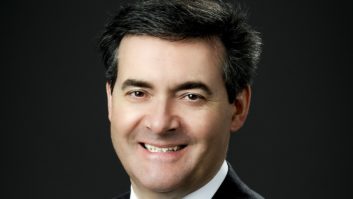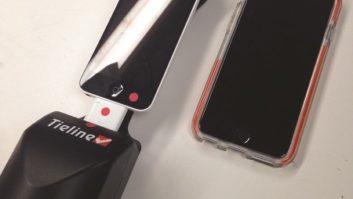Click on the Image to Enlarge
Fred Jacobs is the founder and president of Jacobs Media. This article originally appeared on the Jacobs Media blog.
It’s been a tough couple of years for Nielsen as their entry into radio continues to be fraught with daunting challenges. There have been a number of speed bumps: encoding and Voltair, the SDK project, and the more recent discovery of meter malfunctions. All in all, it’s been a bumpy road in the pursuit of measuring everything radio cares about.
Nielsen’s recent decision to increase the percentage of meters in PPM markets by 10% was welcomed by many broadcasters. But statisticians will tell you that reliability and stability markedly improve only when you double or even triple the sample size. While it’s always a positive to have more meters in the field, this move will not make a significant difference in providing more accuracy to Nielsen’s ratings estimates.
And while many say the biggest problem is meter count, there’s been another well-known but little discussed measurement problem that’s only becoming more corrosive to radio. Yet, it is flying under the radar:
Headphone listening
Cox Media Group President, Kim Guthrie, brought it up earlier this year in an interview with All Access. While Kim discussed a wide range of issues, the Nielsen headphone initiative jumped out as something that was once a Nielsen priority but has now been back-burnered:
“They (Nielsen) still haven’t demonstrated a good way to collect or capture headphone listening. At one time they seemed to be fairly down the road with the creation of the SDK, which was supposed to capture headphone listeners – but they scrapped it after three to four years of development. And there has been nothing new on another headphone methodology. It’s outrageous. Maybe they should figure that out before solving the sample problem. They have a long way to go because they’re still missing a lot of audience for both radio and television.”

It was a reminder to me of the Cell Phone Only dustup that occurred back in 2005 when we started presenting the results of our very first Techsurvey. At that time, we made the discovery that a growing number of homes were dropping their landlines in favor of cell service. At that time, mobile phones were not included as part of the Arbitron diary sample frame.
The “Cell Phone Only” situation was especially prevalent among young listeners and, in our survey, fans of the Alternative format. More and more were moving away from traditional landlines, thus excluding themselves from the ratings process. At that time, a different radio CEO – David Field – was especially concerned about this omission.
After pressure from the Arbitron Advisory Council, this dilemma was addressed and ultimately solved. But it required the steady drumbeat of broadcasters committed to ensuring this problem was being sufficiently handled by Arbitron.
Fast-forward to today, and the headphone problem is glaring – yet ignored. In PPM markets, Nielsen requires its meter families to use a cumbersome adapter to connect headphones sources to the meter. Of course, the dirty little secret is that virtually no one uses it, thus negating listening while a consumer uses headphones, earbuds, or now, Apple’s AirPods.
That last product is an interesting side story. Apple eliminated the headphone jack in their new iPhone7, forcing consumers to use Bluetooth listening devices. Of course, Apple is attempting to solve the problem it created with AirPods, retailing for around $160.
Aside from profits, the purpose of this move by Apple is to eliminate wires, allowing the user more freedom to do just about anything while listening to audio content. In this environment, the PPM adapter creates even more barriers when the mindset moves to less restrictions rather than more unnecessary wires and gadgetry.
There appears to be nothing even in the planning stages to address this ratings headphone problem. And it’s a problem. Back in 2014, we took a stab at measuring headphone/earbud listening in Techsurvey10. As was the case with Cell Phone Only, Nielsen has a generational problem on its hands:
Our data showed that 17% or our respondents listen to radio using headphones half the time or more. Clearly, the generational chart on the left shows the predictable trend – the younger the listener, the greater the likelihood she’s using earbuds or headphones when listening to the radio.
On the right, frequent or occasional headphone use while engaged in a variety of activities shows the same pattern. Not surprisingly, working out is the most-cited activity for listening to audio using earbuds or headphones.
And that has more than obvious implications on radio listening and the way it’s measured, especially to broadcasters with stations serving younger audiences. To provide some trending information, similar questions have been included in this year’s Techsurvey13, which went into the field yesterday. This will allow us to update our data and learn more about how usage patterns and device options are changing – all of which will impact radio and a ratings system that struggles to keep up.
Researchers of all stripes – from Nielsen to companies that conduct perceptual studies and music tests – are facing unprecedented challenges in keeping up with consumer trends, tastes, preferences, and activities. Attaining cooperation from consumers in survey research has only gotten more arduous over time.
These Nielsen research issues come at an ironic time. As we learned first-hand at CES this month, there’s an audio Renaissance taking place. Wherever we went throughout the Las Vegas Convention Center and satellite exhibit halls, we saw evidence that investment in audio is exploding, including turntables, headphones, earbuds, voice command gadgets, podcast networks and apps, and home speaker systems.
For radio broadcasters to fairly share these benefits, measurement must keep pace.
It’s not just a good idea – it’s an imperative.












